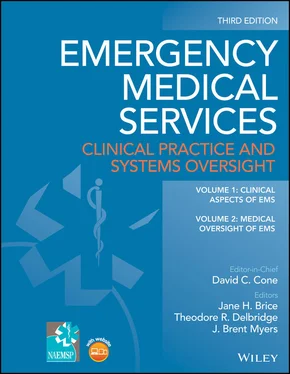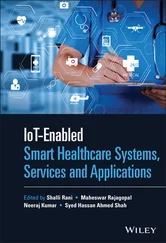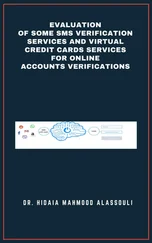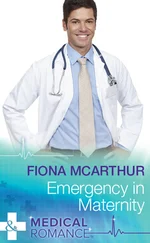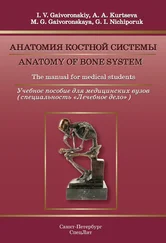In September 1979, emergency medicine was formally recognized as a specialty by the AMA Committee on Medical Education and the American Board of Medical Specialties. One of the strongest arguments in favor of the new specialty was that emergency physicians had a unique role in the oversight of prehospital medicine. ABEM gave its first certifying examination in 1980, which incidentally did not examine on any areas of prehospital care.
Although emergency medicine, emergency nursing, and prehospital care were all nourished by the funds distributed between 1973 and 1982, the first full‐time EMS medical director was not appointed until April 1981 in New York City. Previously, all had been part‐time, and many had been simply functionaries. Shortly thereafter, cities like Salt Lake City and Houston followed New York’s lead, and appointed full‐time EMS medical directors. Even then, EMS as a physician career choice was perceived by many as perhaps a risky career undertaking.
The Highway Safety Act of 1966 funded EMT‐A training and curriculum development. By 1982, there were approximately 100,000 people trained at the EMT‐A level. They were trained to provide basic, non‐invasive emergency care at the scene and during transport, including such skills as CPR, control of bleeding, ventilation, oxygen administration, fracture management, extrication, obstetric delivery, and patient transport. The educational requirements, which began as a 70‐hour curriculum published by the AAOS in 1969, soon grew to 81 hours of lectures, skills training, and hospital observation; most of the increase in those hours were due to the addition of training in the use of pneumatic anti‐shock garments or military anti‐shock trousers. After working for 6 months, graduates were allowed to take a national certifying examination administered by the NREMT. Founded in 1970, the NREMT developed a standardized examination for EMT‐A personnel as one requirement for maintaining registration. Many states began to recognize NREMT registration for the purposes of state certification or licensure or reciprocity between states [29].
While the EMT‐A quickly became a nationally recognized standard, the development of national consensus at the paramedic level was slower, with marked differences in training from locality to locality. Paramedic practices became somewhat formalized with the adoption of a DOT emergency medical technician‐paramedic (EMT‐P) curriculum in the late 1970s. By 1982, EMT‐P training ranged from a few hundred to 2,000 hours of educational and clinical experience. Typical clinical skills included cardiac defibrillation, endotracheal intubation, venipuncture, and the administration of a variety of drugs. The use of these skills was based on interpretation of history, clinical signs, and cardiac rhythm strips. Telemetric and voice communications with physicians were usually required prior to initiating advanced level care. In the early days of paramedics, extensive “online” direct medical oversight was mandatory for all calls in most systems. With time, this requirement was modified by the introduction of protocols allowing for greater use of standing orders [39]. However, a great deal of variation in the use of direct medical oversight remained. As early as 1980, paramedics in decentralized systems, such as New York’s, used many clinical protocols, most of which had few indications for mandatory direct medical oversight. On the other hand, as late as 1992, many centralized systems, such as the Houston Fire Department, had only a few standing orders (mainly for cardiac arrest) that did not require contemporaneous discussion with a direct medical oversight physician.
The concept of the EMT‐intermediate (EMT‐I) evolved as a clinician level positioned somewhere between EMT‐A and EMT‐P. Airway management, intravenous therapy, fluid replacement, rhythm recognition, and defibrillation were the most common “advanced” skills included in the EMT‐I curriculum, though significant variation existed from state to state. To meet perceived unique needs of care capabilities from state to state, states developed several levels of EMT‐I, often in a modular progression with formal bridge courses. By 1979, formally recognized prehospital personnel existed at dozens of levels, with highly variable requirements for medical oversight.
CPR training gradually became more widely accepted, as evidenced by participation in training programs throughout the country. As early as 1977, a Gallup poll reported that 12 million Americans had taken CPR courses and another 80 million were familiar with the technique and wanted formal training [6]. The success of public training was documented by many studies [40, 41]. The issues of whom to train and how to improve skill retention continue to be explored, as evidenced by the AHA/International Liaison Committee on Resuscitation (ILCOR)’s Guidelines 2020 document, which contains significant changes in how the techniques of CPR and emergency cardiac care are taught to laypersons [42]. CPR guidelines based on ILCOR and AHA guidelines continue to be updated.
Before 1973, there were few communication systems available for emergency medical care. Only 1 in 20 ambulances had voice communications with a hospital, a universal emergency telephone number was not yet operational nationally, and telephones were not available on highways and rural roads. Centralized dispatch was uncommon and there were problems in communications because of community resistance, cost, and insufficient and variable technology. With DOT funding, major steps were taken toward overcoming these communication problems. National conferences, seminars, and public awareness programs advocated diverse methodologies for EMS communication systems. A communications manual published in 1972 provided technical systems information [43]. Although the first 9‐1‐1 call was placed in 1968, it was not until 1973 that the 9‐1‐1 universal emergency number was advocated as a national standard by DOT and the White House Office of Telecommunications. The Federal Communications Commission established rules and regulations for EMS communication and dedicated a limited number of radio frequencies for emergency systems. In 1977, DHEW issued guidelines for a model EMS communications plan [44].
EMS medical directors gradually began to appreciate the importance of more structured call receiving, patient prioritizing, and vehicle dispatching. Physicians were forced to look seriously at EMS operational issues that had previously been seen as neither critical nor medical [45]. Formalized emergency medical dispatch program development began in the mid‐late 1970s. On the other hand, telemetry as it had been pioneered by Gene Nagel in Florida was generally seen to be impractical, expensive, and unnecessary, and essentially disappeared over time.
Transportation of the critically ill or injured patient rapidly improved after 1973. Although national standards for ambulance equipment were developed in the early 1960s, a 1965 survey of 900 cities reported that fewer than 23% had ordinances regulating ambulance services. An even smaller percentage required an attendant other than the driver, and only 72 cities reported training at the level of an American Red Cross advanced first aid course, the nearest thing to a standard ambulance attendant course before the advent of EMT‐A in 1969 [46]. The hearses and station wagons used in the 1960s did not allow personnel room to provide CPR or other treatments to critically ill patients. The vehicles were designed to carry coffins and horizontal loads, not a medical team and a sick patient. In the 1960s, two reports focused national attention on the hazardous conditions of the nation’s ambulances [16, 47]. In addition to inadequate policies, staff training, and communications, ambulance design was faulty, and equipment absent or inadequate. Morticians ran 50% of the ambulance services because they owned the only vehicles capable of carrying patients horizontally. No U.S. vehicle manufacturer built a vehicle that could be termed an ambulance.
Читать дальше
